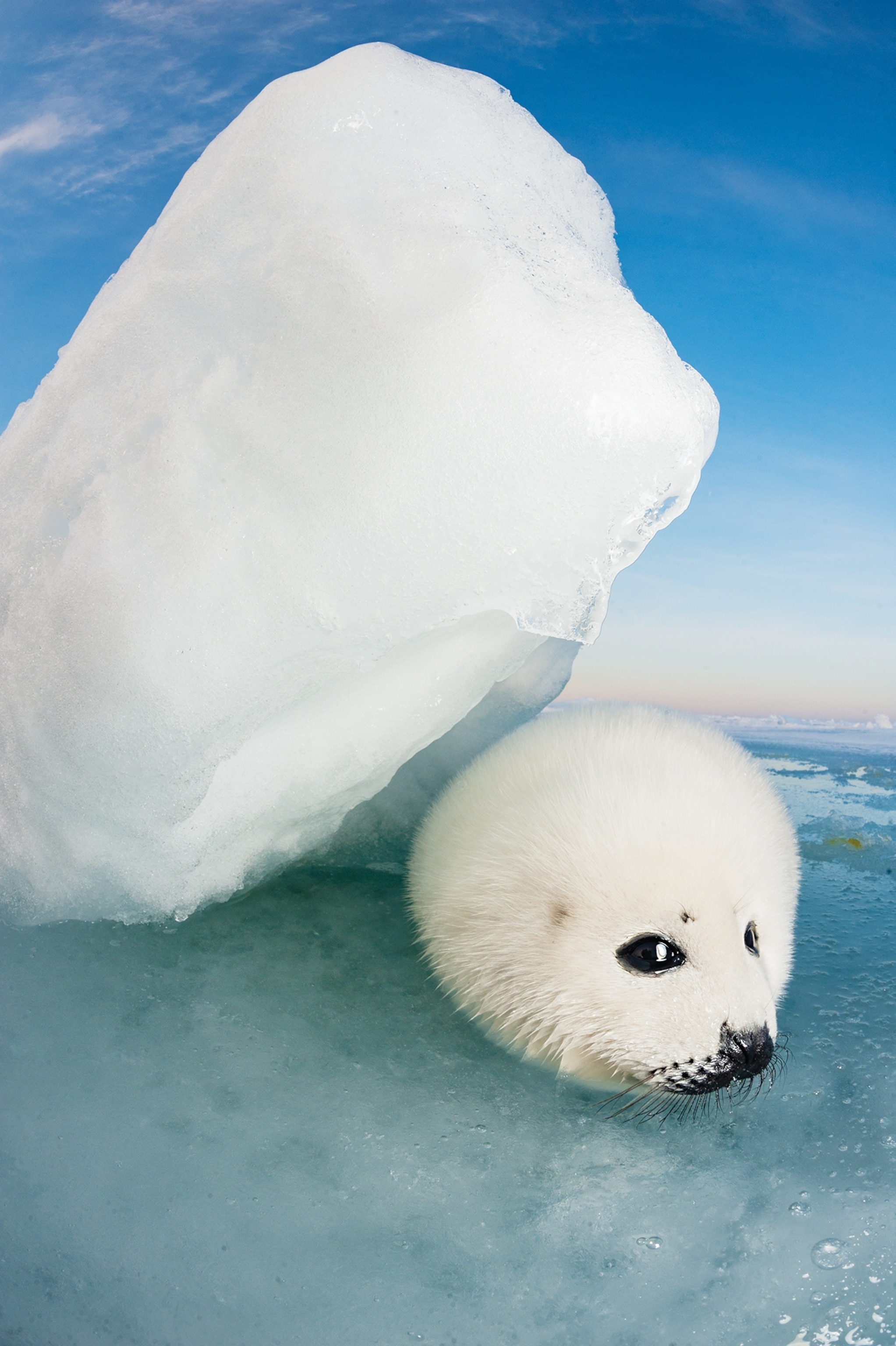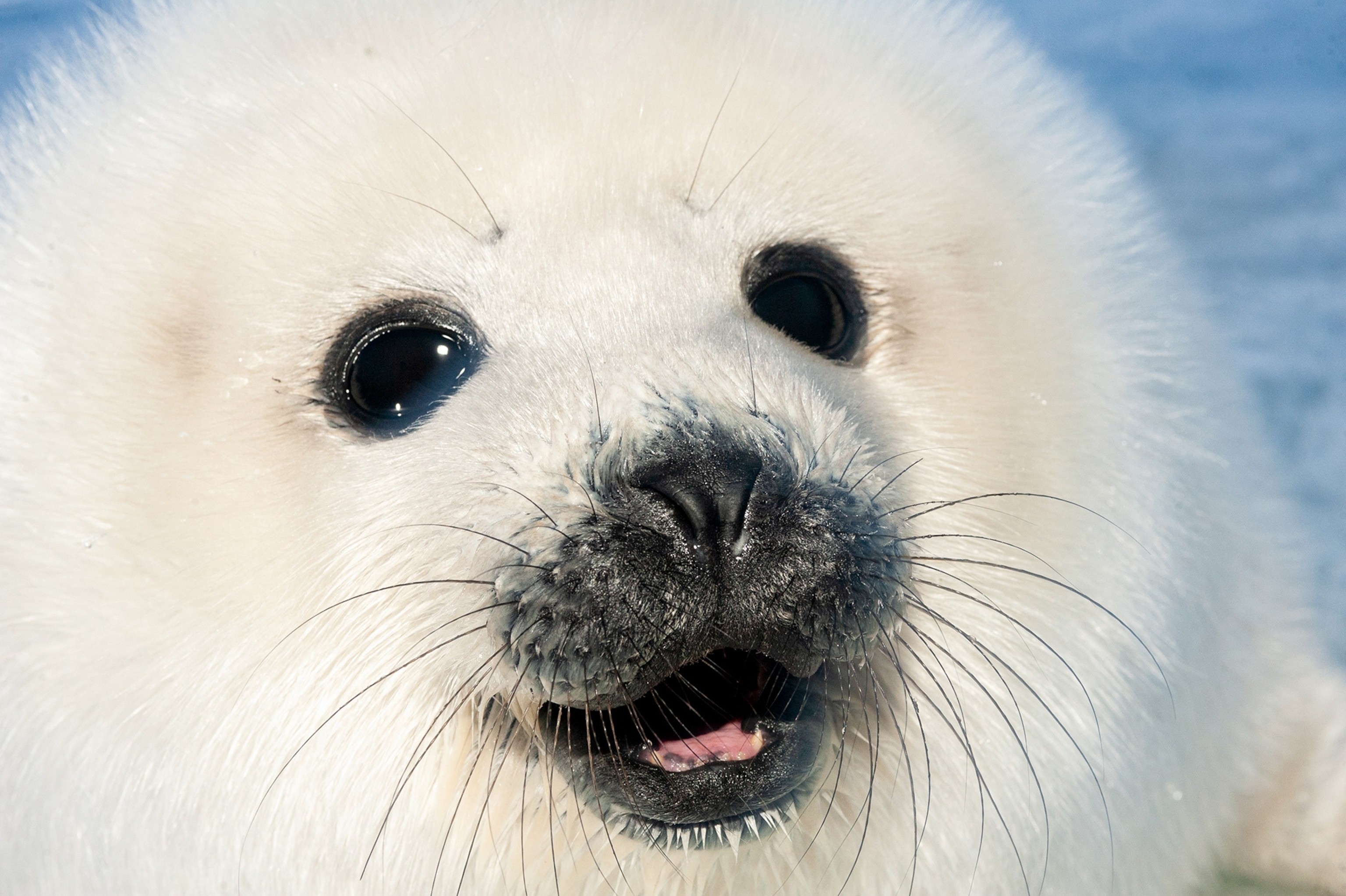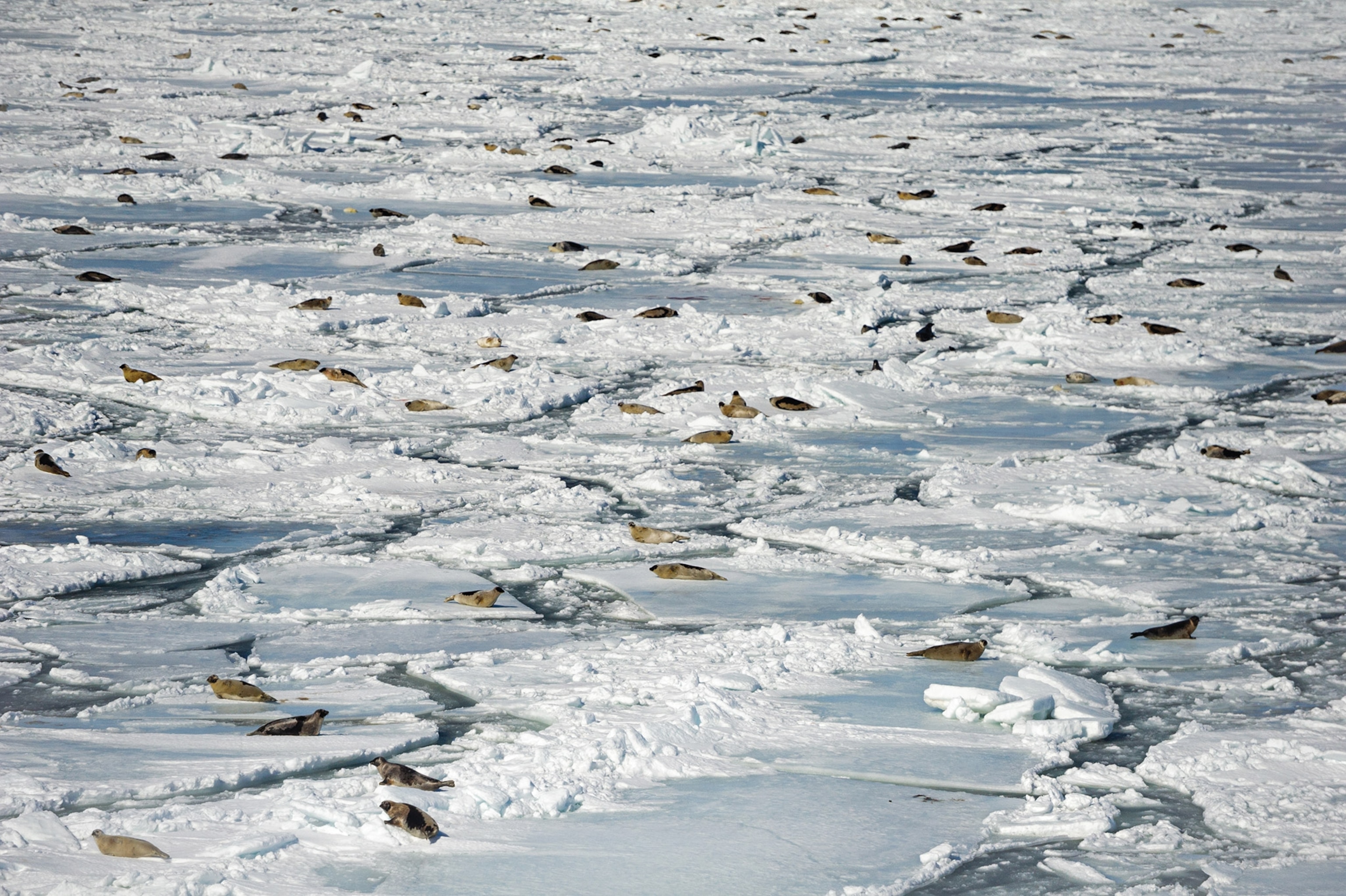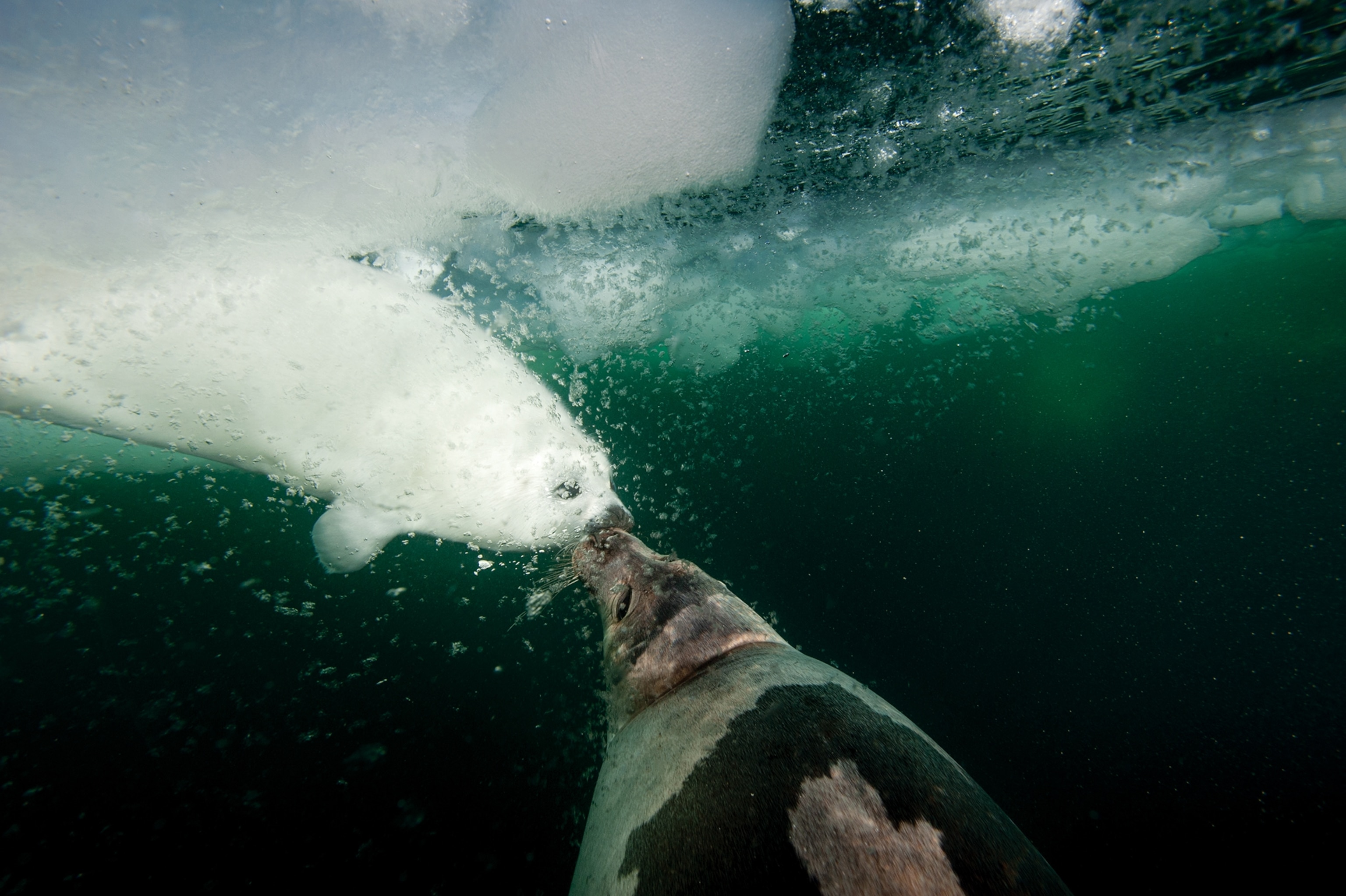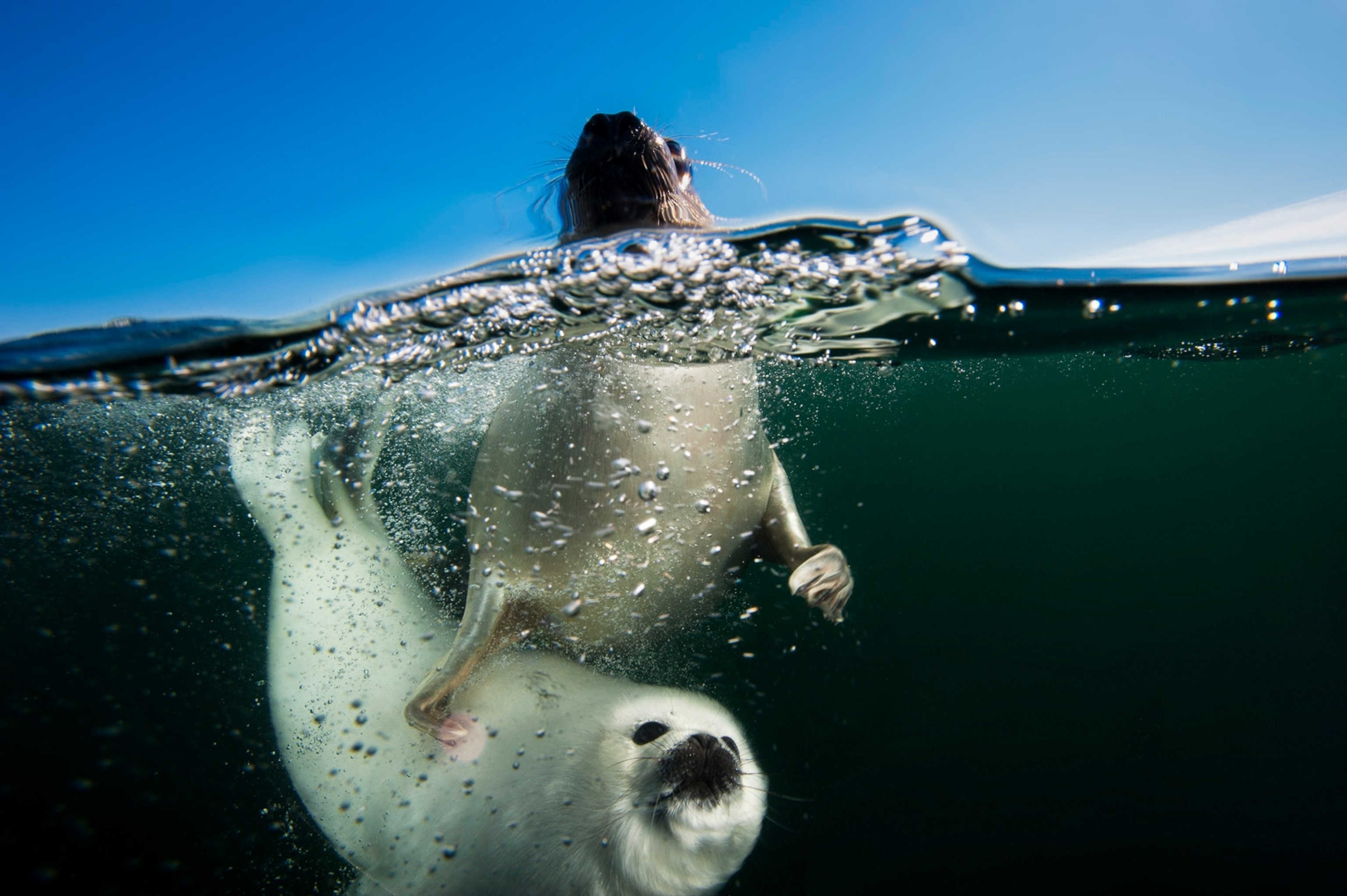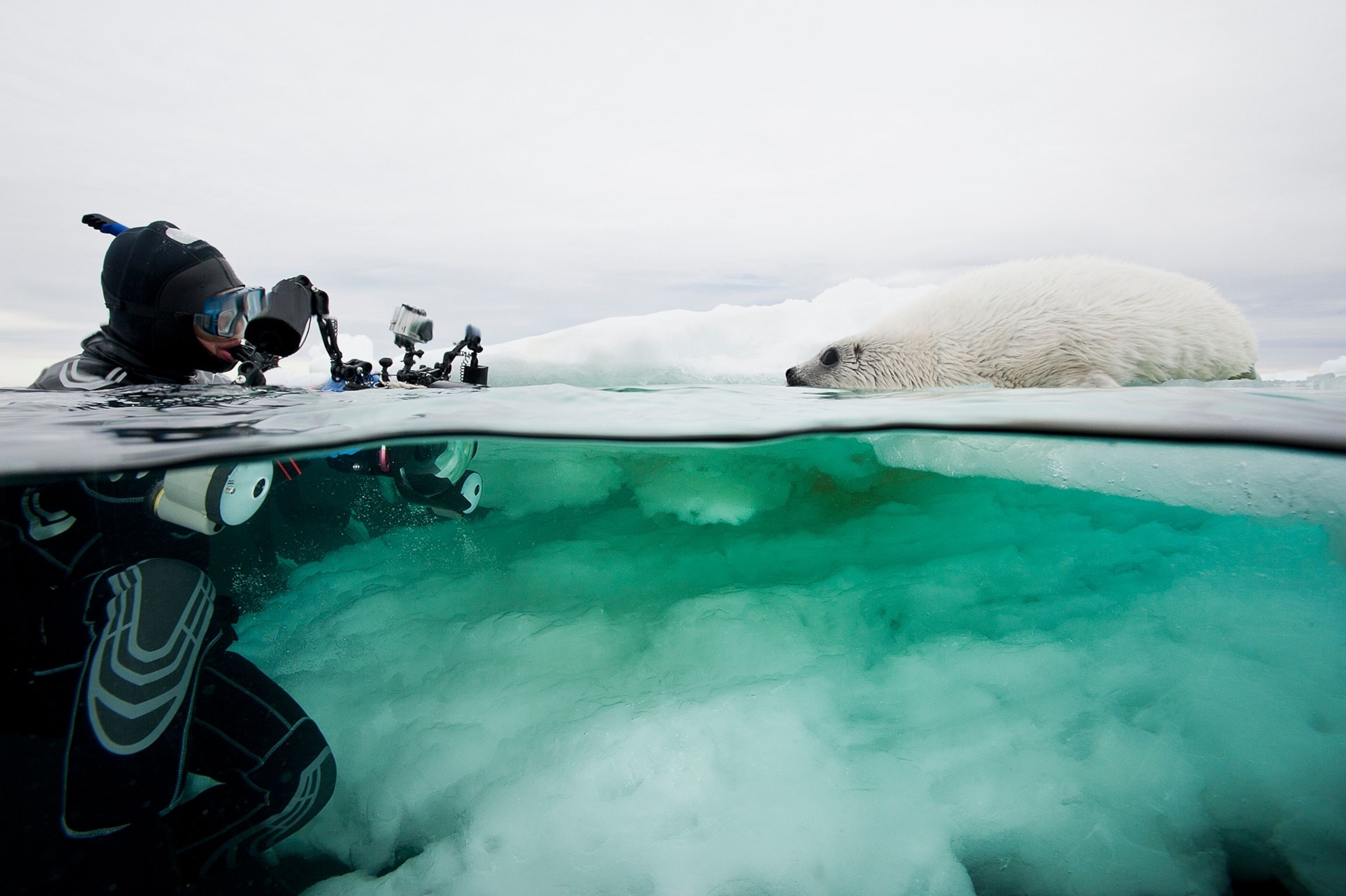
Inside the fragile world of Québec’s harp seals
A Nat Geo photographer explores the precarious, frozen landscape of the world’s cutest creatures.
When you walk on sea ice, it’s easy to forget that there’s an ocean below you. This frozen world is stripped down to essentials: impossibly blue sky, bright sun bouncing off a blanket of fresh snow, wind that vibrates like a cello, whiteness all around.
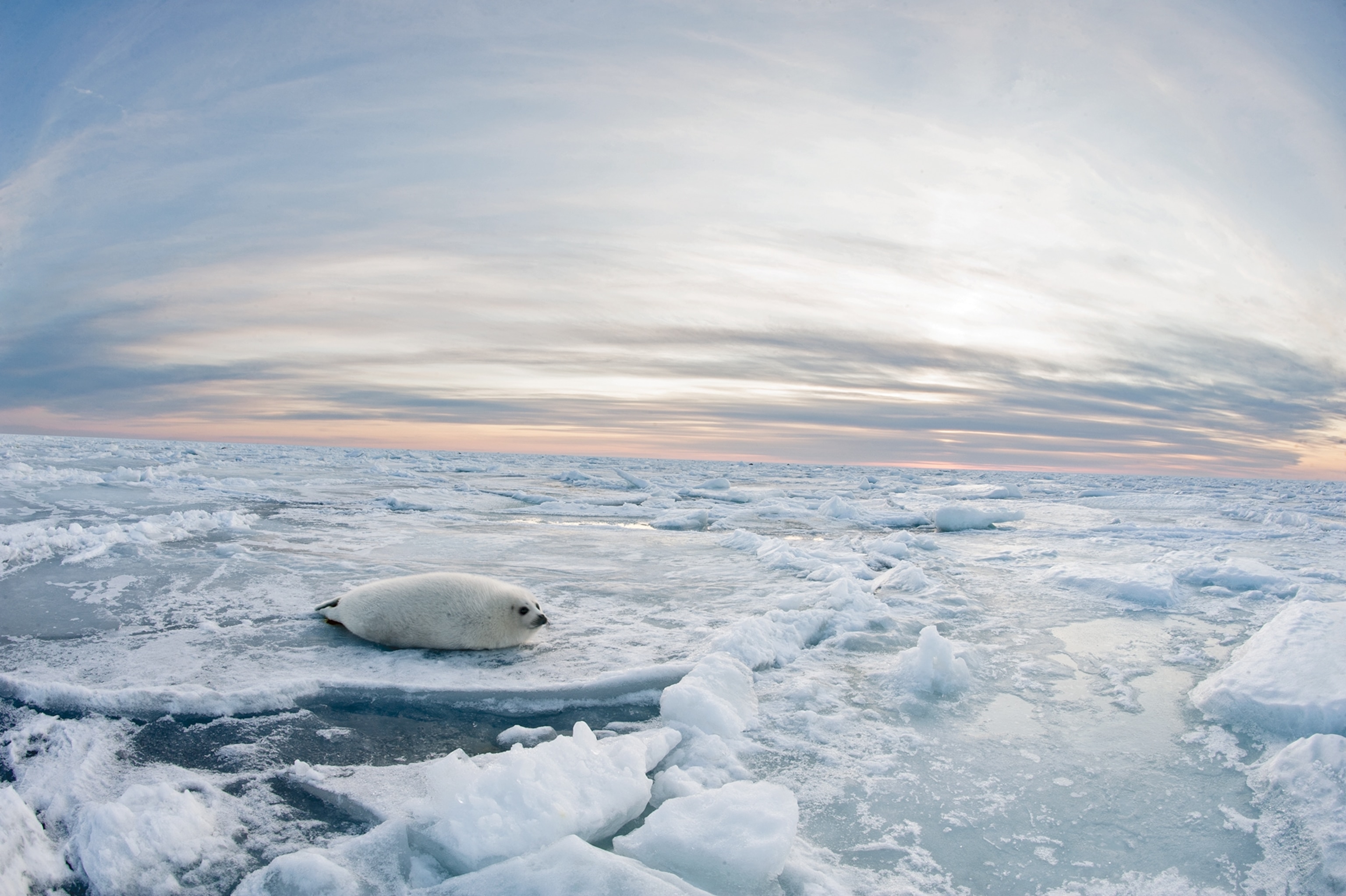
Welcome to the harp seal nursery in the Gulf of St. Lawrence, located off the Magdalen Islands (Îles-de-la-Madeleine), Québec. Given its importance as one of two Northwest Atlantic harp seal whelping grounds, the area is one of Nat Geo’s Best Trips for 2020. Adult seals migrate here from the Arctic, the pregnant females searching for suitable ice on which to give birth. Harp seals are an ice-obligate species; they require a stable sea platform of ice for pups to survive. Born on the ice in late February and early March, the pups nurse for 12 to 15 days before being left on their own. The young seals are among the most captivating creatures on the planet, with obsidian eyes, charcoal noses, and cloud-soft fur.
I hear the distant chorus of infant cries and stand still for some time, listening. It’s a precious moment that I want to appreciate fully before I pull out my cameras. I catch a slight movement in a ridge of snow ahead of me—a gentle and clumsy wave of a tiny flipper. I see a pup nestled inside a small snow cave molded by body heat and movement, protected from the wind. Its coloring is still tinged with a hint of yellow from amniotic fluid. When it turns, I can see its thick pink placenta.
I choose a spot a polite distance away and kneel in the snow, watching and waiting, making a note of the date: March 8, 2019. I hear sloshing water and short grunting breaths before I see a whiskered face with big dark eyes rise and survey the surroundings from a nearby hole in the ice. The female emerges, using curved claws to pull herself onto and across the ice to her pup. They meet with a nose-to-nose kiss of recognition that establishes kinship: Are you my pup? Are you my mother? The female turns to gauge my presence, determines I am no threat, and settles onto her side, shuts her eyes, and begins to nurse.
Facing multiple threats
As I scan the icescape, I see larger, more active pups in their whitecoat phase. These older pups, born days earlier, have the distinct advantage of time in the increasingly unpredictable world of climate change and its impact on the ice beneath them.
Late-born pups especially need an adequate period of stable ice to survive in a world where spring comes earlier every year and, with it, increasingly strong storms that demolish the ice pack like a blender. A life born to ice is difficult, and natural mortality is high; add a season of increased temperatures and decreasing ice and you have a deadly combination for the pups.
The Magdalen Islands, or the Maggies, as some Canadians affectionately call them, are an archipelago of islets that resemble ships at anchor in the center of the Gulf of St. Lawrence. In 2011 a National Geographic assignment first took photographer (and my partner) David Doubilet and me to the Maggies, for a story about the Gulf of St. Lawrence’s marine ecosystem.
The boat we boarded to meet the seals was a steel-hulled fishing—and seal-hunting—vessel. Magdalen Islanders have fished and hunted seal off these shores since the 1600s. It’s a controversial tradition that continues today with strict quotas and regulations (no whitecoats)—despite a substantial decline in the number of seals harvested due to decreasing market price and unfavorable ice conditions. “Given the current market situation for hunting products,” our guide, Mario Cyr, told me, “ecotourism and observation tours are the best alternative for most boat owners and hunters.”
After two days of searching open water, the boat’s captain nosed the vessel into a patch of sea ice supporting a herd of more than 10,000 seals. We drifted there with the ice over several days and nights. It was extraordinary to pull on crampons and walk among this gathering of pulsating life on the ice and then to put on a dry suit, mask, fins, and snorkel and slide into their world with a camera. Life at the edge of the patch can be a busy place, with mothers coming and going beneath a dark-blue cathedral of ice pierced by shafts of light, apprehensive whitecoats peering into the sea considering their first swim, and veterans gliding about and exploring their new ocean world.
Despite the challenge of finding the herd, the assignment was a photographic success, and it gifted me with a life-changing moment. On our last day on the ice, a mother seal swam to defend me from an aggressive male seal as I floated respectfully near her and her pup. The male nipped my ankles and scrabbled over my back, pushing me below the surface. She fought him off and then nudged both her pup and me through the water and out of harm’s way.
I was still processing what had happened as our ship got under way, heading back to port ahead of a building low-pressure system. The storm tore across the gulf, whipping it to froth and frenzy. By the time we made shore, we learned that the sea ice had disintegrated beneath the herd and the pups had been lost.
Learning, growing, and healing
Our commitment to the seals did not end after our story was published in 2014. The storm had made my encounter with the mother seal bittersweet and forced me to realize that we were now facing a new truth—that the world of ice was as fragile as a dream. The realization galvanized my resolve to return each year that ice conditions allow to track the harp seals’ lives and connect others with these creatures and their diminishing realm.
Fast forward to 2019. Mario Cyr called to cancel our boat charter for our annual visit to the seal nursery—the fishing boats were “iced in.” The silver lining: It was looking like a good year for seals. The situation presented the perfect opportunity to finally explore helicopter-based harp seal ecotourism. The Château Madelinot, located on Cap aux Meules, the Magdalens’ main island, operates helicopters that take travelers over the pack ice during seal pup season, landing only if conditions are safe. Which is how I find myself watching a pup nursing, as its mother soaks up the warm sun. I eventually walk back toward the helicopters. I see a girl sitting quietly next to a chubby whitecoat that stares intently back at her. Other travelers I meet include a couple on a Valentine’s Day date, a cancer patient, and a Japanese photographer and guide celebrating his 30th year with the seals. There’s the young lady who brought her toy seal from childhood, and a twentysomething man from Kingston, Ontario, who slept in his car and ate canned goods after spending his last dollar for the final helicopter ride of the season. Passion and curiosity brought them all here to learn, grow, and heal.

The scene in the gulf couldn’t be more different now. The winter of 2020 has been a particularly challenging one. In late February and early March, two storms whipped through the islands, ripping the ice apart. All of this year’s seals are feared lost. It’s a harsh reminder that these vulnerable animals live at the front lines of climate change.
Before my snorkeling encounter with the protective mother and her pup, I was a skeptic about human-wildlife interactions. But I now accept that sometimes things happen when we least expect it. Biologists can point out why a testosterone-fueled male seal was compelled to challenge me while I was swimming with his potential mate. But they cannot easily explain why a mother seal would push me to safety with her pup. I don’t need explanations, I just embrace it.
Getting there
The world of the harp seal isn’t just for professional photographers or extreme adventurers. The Magdalen Islands are accessible via air, boat, or a ferry from Prince Edward Island.
Flights to Cap aux Meules, the main island in the Magdalens, are less dependent on sea ice conditions but of course are more expensive than the ferry. Air Canada Express operates flights from Montréal, Québec City, and Gaspé. Pascan Airline is a local option often booked by islanders. CTMA runs year-round ferry service from the port town of Souris on Prince Edward Island to Cap aux Meules. The journey takes about five hours.
Things to do
Madelinots are as versatile as they are kind and spirited. The winter is a perfect time for a conversation around a fire, with a craft beer in hand. Winter activities also include cross-country skiing, ice sailing, or snow kiting. Hike the islands’ signature, red-sandstone cliffs year-round, maybe accompanied with a picnic of local cheeses, smoked herring, and artisan breads. Mid-Lent celebrations are a beloved and generations-old tradition in the Magdalens, full of music, costumes, and merrymaking.
How to see the seal pups
Liveaboard boat: The Magdalen Islands are one of the only places on the planet allowing snorkeling and diving access to the secret world of the harp seal. A boat-based ice safari offers the luxury of time with the harp seals above and below the sea ice. Charters are generally available from late February through early March. Expeditions last an average of six days. The ice-capable fishing boats offer basic expedition-style accommodations: communal bunk space, galley, shared toilet, and local cuisine. Liveaboard boat expeditions are subject to the uncertainty of ice conditions, but they offer advantages not provided by daylight helicopter access: unlimited time and light on the sea ice to experience sunrise, sunset, and twilight; diving and snorkeling in the sea ice with harp seals; encounters with other species that live on the ice pack; going to sleep with the sounds of the harp seal nursery echoing across the ice. Contact Mario Cyr, a lifelong Madelinot, diver, photographer, filmmaker, and expedition guide.
Day excursion via helicopter: Hotel Madelinot offers small-group excursions via helicopter to search for the seal herd on the ice pack. Before heading out, participants are briefed on harp seal biology, etiquette, and safety on the ice. Helicopters set down a safe distance away from the herd, and guests get out to explore the nursery. The experience lasts about three hours and is ice- and weather-dependent.




